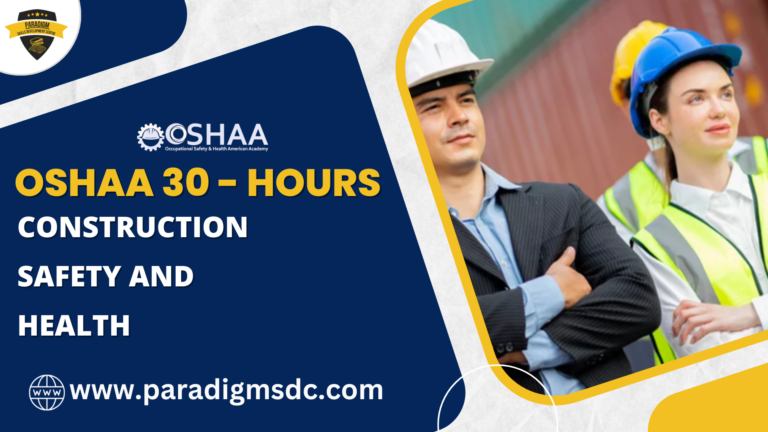Course Introduction
Entering confined spaces presents unique hazards and challenges, making safety a critical concern for workers and supervisors. The ICTQual Level 1 Award in Confined Space Entry is designed to equip individuals with the essential knowledge and skills to safely enter and work in confined spaces. This course lays the foundation for understanding confined space risks and implementing appropriate safety measures.
Course Overview
The ICTQual Level 1 Award in Confined Space Entry provides a thorough introduction to confined space safety. Participants learn about identifying confined spaces, recognizing potential hazards, and applying necessary safety protocols. The course includes both theoretical knowledge and practical training, ensuring that participants are well-prepared to manage confined space entry safely.
Course Study Units
- Understanding Confined Spaces
- Legislation and Regulations
- Hazard Identification and Risk Assessment
- Personal Protective Equipment (PPE) and Safety Gear
- Entry and Exit Procedures
- Atmospheric Monitoring and Gas Detection
- Emergency Procedures and Rescue Techniques
Learning Outcomes
Upon completion of the course, participants will:
. Understanding Confined Spaces
- Define confined spaces and identify their characteristics, including limited entry and exit points, restricted airflow, and potential hazards.
- Recognize various types of confined spaces commonly encountered in industrial settings, such as tanks, silos, and sewers.
- Identify common hazards present in confined spaces, such as oxygen deficiency, toxic gases, and physical hazards like engulfment.
- Understand the importance of confined space awareness and the implementation of safety precautions to mitigate risks effectively.
2. Legislation and Regulations
- Explain relevant health and safety legislation and regulations governing confined space entry operations.
- Identify the legal responsibilities of employers and employees regarding confined space safety.
- Describe the requirements for obtaining confined space permits and conducting risk assessments before entry.
- Ensure compliance with confined space entry standards and guidelines to maintain a safe working environment.
3. Hazard Identification and Risk Assessment
- Identify potential hazards associated with confined space entry, including atmospheric, physical, and biological hazards.
- Conduct thorough risk assessments to evaluate the likelihood and severity of identified hazards.
- Implement control measures to mitigate risks, following the hierarchy of controls (elimination, substitution, engineering controls, administrative controls, personal protective equipment).
- Develop risk assessment strategies to ensure the safety of personnel entering confined spaces.
4. Personal Protective Equipment (PPE) and Safety Gear
- Identify the types of personal protective equipment (PPE) required for confined space entry, such as harnesses, helmets, and respiratory protection.
- Demonstrate the proper selection, fitting, and use of PPE for different confined space environments.
- Perform routine inspection, maintenance, and storage of PPE to ensure its effectiveness and integrity.
- Implement emergency response procedures in the event of PPE failure or malfunction.
5. Entry and Exit Procedures
- Establish pre-entry procedures, including hazard assessment, permit issuance, and equipment checks, to ensure safe entry into confined spaces.
- Safely enter and exit confined spaces using appropriate access equipment, such as ladders, hoists, or descent devices.
- Communicate effectively with entry and standby personnel to coordinate entry and exit procedures and ensure safety throughout the operation.
- Implement emergency procedures for rapid evacuation in the event of unforeseen hazards or incidents.
6. Atmospheric Monitoring and Gas Detection
- Recognize atmospheric hazards commonly encountered in confined spaces, including oxygen deficiency, flammable gases, and toxic substances.
- Operate gas detection and atmospheric monitoring equipment to assess air quality and detect hazardous gases.
- Interpret gas concentration readings and alarm signals to make informed decisions regarding entry into confined spaces.
- Respond appropriately to hazardous atmospheric conditions to prevent accidents and ensure the safety of personnel.
7. Emergency Procedures and Rescue Techniques
- Develop confined space emergency response plans to address potential hazards and incidents.
- Assess confined space rescue hazards and implement rescue techniques using appropriate equipment and procedures.
- Coordinate with emergency services and internal rescue teams to facilitate prompt and effective rescue operations.
- Demonstrate proficiency in confined space emergency procedures and rescue techniques through simulated scenarios and practical exercises.
Course Benefits
- Enhanced Safety: Gain essential knowledge to ensure personal and team safety in confined spaces.
- Professional Development: Enhance your skills and qualifications in workplace safety.
- Practical Skills: Learn practical procedures and techniques that can be applied immediately.
- Compliance: Ensure compliance with legal and regulatory standards, reducing the risk of fines and penalties.
- Career Advancement: Improve your employability and career prospects in industries where confined space entry is common.
Who is this Course For?
This course is ideal for:
- Workers who are required to enter confined spaces as part of their job.
- Supervisors and managers responsible for overseeing confined space work.
- Safety officers and coordinators aiming to enhance their knowledge of confined space safety.
- Maintenance and inspection personnel working in environments with confined spaces.
- Anyone interested in understanding the basics of confined space entry and safety.
Future Progression
Upon completing the ICTQual Level 1 Award in Confined Space Entry, participants can pursue further qualifications and career advancements, such as:
- ICTQual Level 2 Award in Confined Space Entry and Rescue.
- Advanced certifications in occupational health and safety.
- Specialization in confined space safety consulting and training.
- Leadership roles in workplace safety and compliance departments.
Investing in the ICTQual Level 1 Award in Confined Space Entry is a crucial step towards ensuring safety in hazardous environments. By gaining foundational knowledge and practical skills, participants are better equipped to protect themselves and their colleagues, ultimately contributing to a safer and more compliant workplace.






